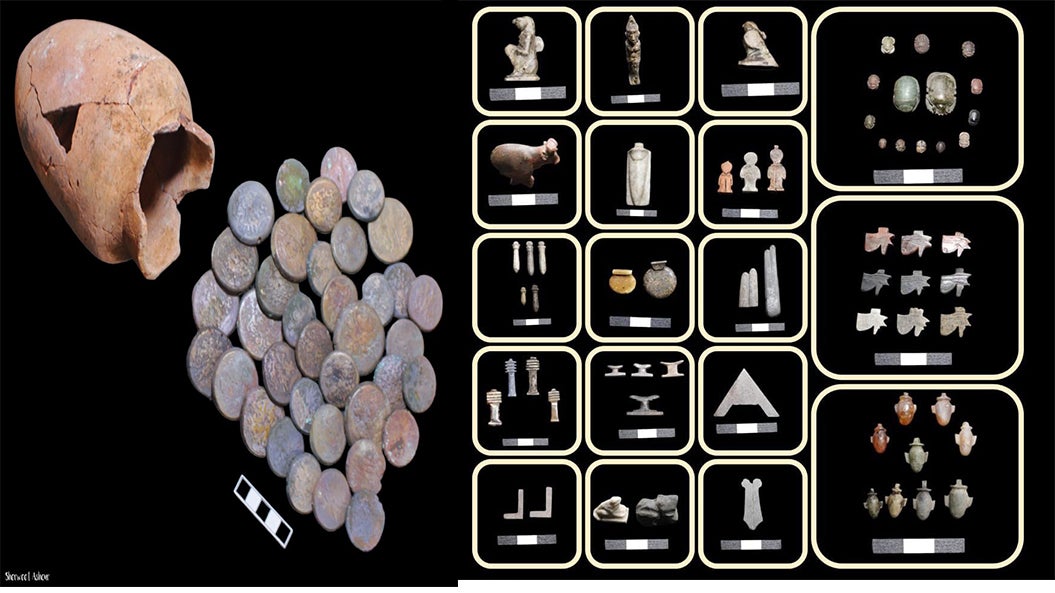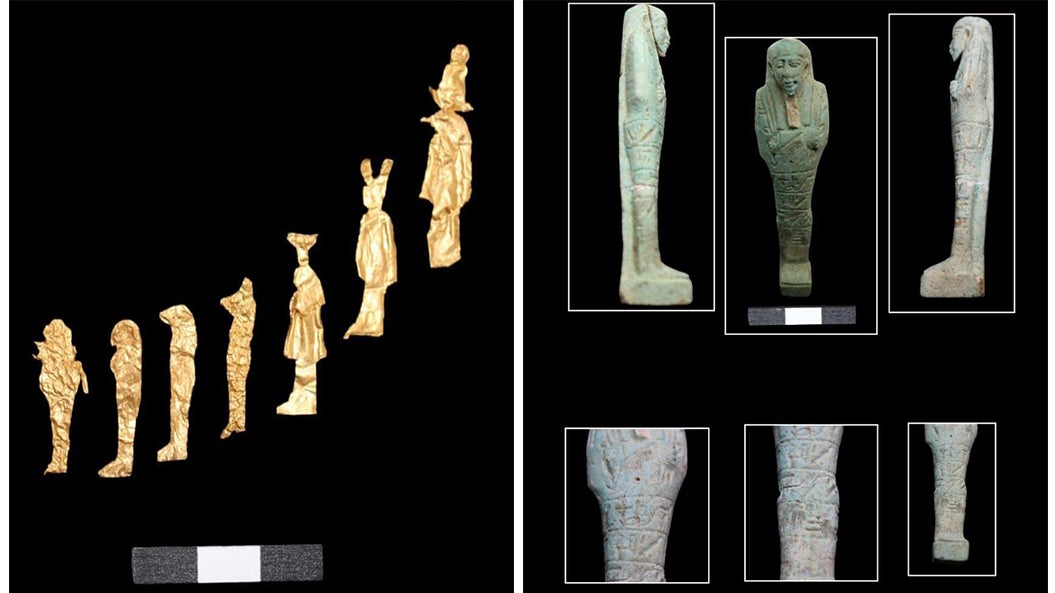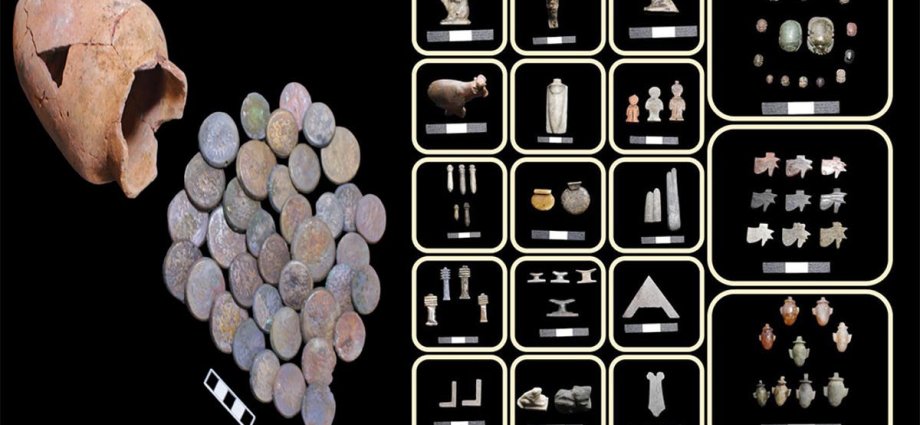Archaeologists have uncovered dozens of tombs in an ancient Egyptian necropolis containing burials at least 2,500 years old, along with rare untouched gold treasures.
Unlike most ancient Egyptian treasures from millennia ago that have been looted by grave robbers, the latest site was found to contain a hoard of untouched bronze coins, gold foil and ancient figurines representing deities such as Isis, Bastet, and Horus.
Undamaged artefacts like pottery vessels, funerary amulets, and scarabs found along with the treasures throw fresh light on the customs and rituals followed by ancient Egyptians of this era, says Mohamed Ismail Khaled, secretary general of the Egyptian Supreme Council of Antiquities.
For decades, researchers have been carrying out excavation projects at a site in Tel el-Deir near Lebanon, found to be an ancient cemetery, or necropolis.
In 2019, archaeologists found seven gold coins dating to the Byzantine period between 284 to 641 AD, and statues engraved with the name of King Psamtik II of the 26th Dynasty.

Excavations over the years culminated in the discovery of a vast burial complex in 2022, dating to between 644 and 525 BCE.
This necropolis dated to the Late Period of ancient Egypt hosts several kinds of burials, being the final resting place of the bodies of humbler common citizens as well as those of the rich.
At the site, researchers previously uncovered miniature canopic jars, vessels into which a dead person’s organs were placed during mummification.
Tombs here were made of mud brick in the case of common folk and limestone in the case of wealthier individuals.

Surprisingly, archaeologists also unearthed 38 bronze coins in a ceramic jar at the site dated to the Ptolemaic dynasty, which lasted several hundred years after the complex was built from from 305 to 30 BC.
Along with this finding, an architectural layout of the complex unearthed during the dig may lead to re-dating of an important period for the ancient Egyptian city of Damietta, researchers say.
Overall, the unearthed artefact shed better light on the craftsmanship of the ancient Egyptians as well as their access to materials via trade.
Together, these findings hint that Damietta was an important commercial hub for a significant period in the history of ancient Egypt.











